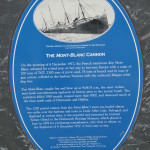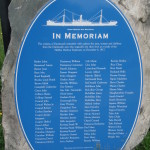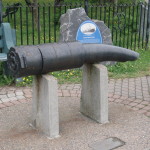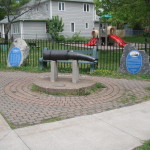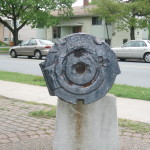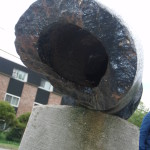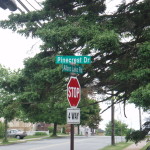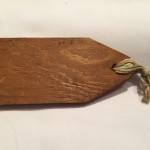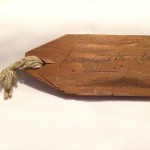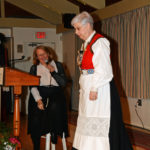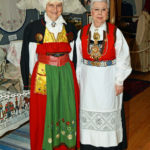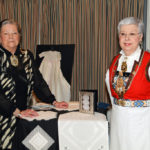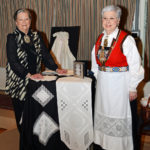Synchronicity has various definitions, but could be simply described in plain English as “coincidence beyond belief.”
Synchronicity has happened to me and to people I whom know. I cannot explain it, but I have concluded that SOMETHING can and does affect us in very mysterious ways. This is not just things that might be conceived of as being under the control of one person, but includes incidents where total strangers play crucial roles.
===================

THE CASE OF THE WORLD WAR I DOCUMENTS
Please click here to see the full story on another page of this web site. 2015 July Documents of Lieutenant Earle Walter Hume.
===================
A MILLION PIECES – THE 1917 HALIFAX EXPLOSION
On December 6, 1917, during World War I, two ships collided in Halifax Harbour in Nova Scotia. The S.S. Mont Blanc was loaded with explosives and fuel. She caught fire and exploded, into perhaps a million pieces, flattening much of the cities of Halifax and Dartmouth. The Halifax Explosion of 1917 has been described as the largest man-made explosion until the development of nuclear bombs.
The deck cannon of the Mont Blanc flew through the air and was later found on the shore of Albro Lake. The barrel was bent from the explosion. The breech and a big chunk at the muzzle were missing. In the 1960s the cannon tube (barrel) was mounted upside down in front to the Dartmouth Heritage Museum. About 1967 I was working at the museum as a volunteer. In storage I found a triangular chunk of steel with rifling marks which was obviously from a cannon. The museum records showed that it had crashed through a lady’s roof in Dartmouth at the time of the Halifax Explosion of 1917. I asked the Museum Director, Mr. Robert (Bob) Frame (as I recall) if we could see if it was part of the Mont Blanc’s cannon. It was a perfect fit! Out of perhaps a million pieces, two pieces of this gigantic jigsaw puzzle were temporarily rejoined. The cannon tube is now mounted near Albro Lake in Dartmouth, again in the upside down position. I suspect that the connection between the two pieces has long been forgotten by the museum.
===================
DR. FREDERICK BANTING

Dr. Frederick Banting was co-inventor, with Dr. Best, of Insulin. Three members of our family had encounters with the Bantings.
- At an unknown date, perhaps in the early 1920s, one of my Mother’s aunts was asked by him to go out with him, but my Grandmother advised her not to date him.
- In WWII, Sir Frederick Banting was proceeding to the UK for War Work. The Hudson bomber that he was on crashed in Newfoundland and he was killed. My father, Lieutenant A.H. Stevens. was based in Newfoundland at the time with the Lincoln and Welland Regiment of the Canadian Army and he visited the crash site. He took a souvenir, a wooden luggage tag with “Sir Frederick Banting” hand-written on it. The tag was “lost” for years and was only found after my father passed away in 1985.
- At a Remembrance Day ceremony about 1995, I noticed a gentleman wearing a Glengarry, just as I was wearing. I went over and introduced myself, saying the “We highlanders should stick together.” He said that his name was Banting. I asked if he was any relation to Sir Frederick Banting and he replied, “Yes, he was my father.”
====================
THE 1815 JACOB FRY HOUSE IN JORDAN, ONTARIO
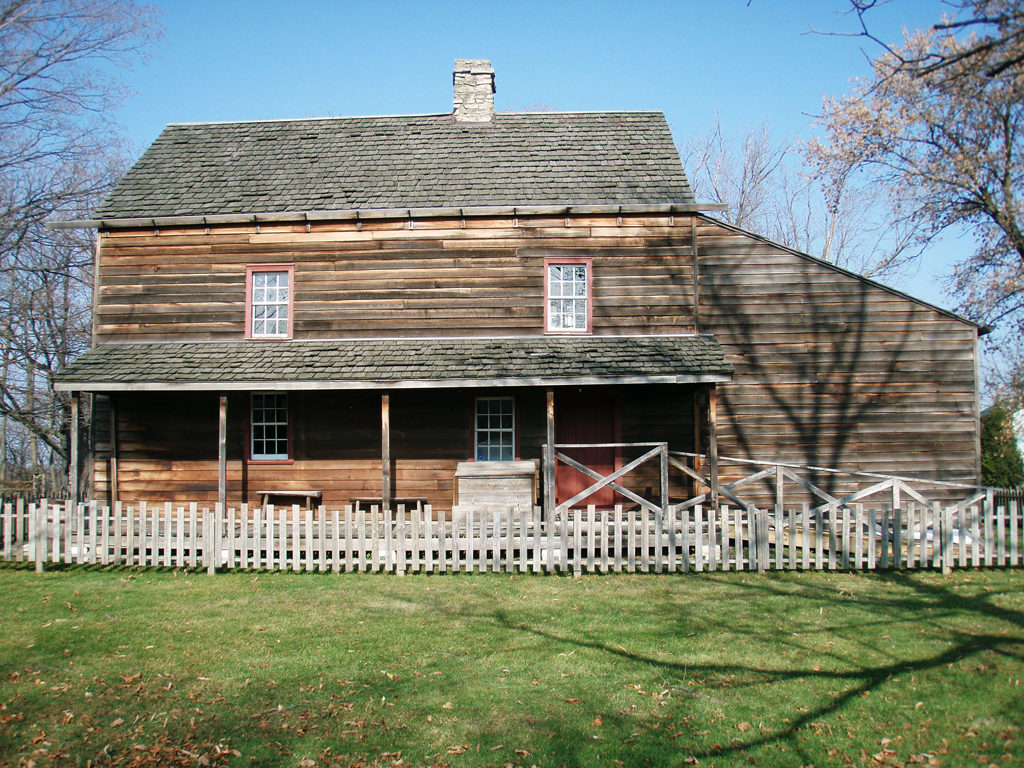
While I was Manager of the New Westminster Museum and Archives, in British Columbia, Canada, a researcher came in looking for photos of an adjoining city, Port Coquitlam. As we chatted he mentioned that he came from St. Catharines, Ontario. I replied that I had lived there and had many relatives who also had lived there. He then explained that actually, he was from a small village West of St. Catharines, a place called Jordan. I asked if he knew of the 1815 Fry Family Farm House that was preserved in the Jordan Museum. He said yes he did and that it had belonged to his ancestors. I responded “Mine too!” His name was Robin Fry and he was descended from the eldest son. I was descended from the eldest child, a daughter. We were 4th cousins, once removed. Jordan is 4,340 km from New Westminster.
====================
A RARE PART FOR A RARE SUB-MACHINE GUN – THE MP-18, I
I founded the Seaforth Highlanders of Canada Museum and Archives in 1972 and ran it for about 15 years over three different “tours” of volunteer duty. One of the artifacts was a 1918 German Schmeisser MP-18 I submachine gun. These are quite rare and were issued to German storm troops in the last few months of the war. The used the existing Luger snail-drum magazine, but as the MP-18 I’s magazine housing was shorter than the butt of a Luger pistol, the magazine would slide in too far and the lips would be mangled by the bolt as it slammed forward. Our specimen was missing the special sleeve that fitted over the snail-drum magazine to seat it properly. I worked for Lever Arms for a little while in the early 1970s and one day, while cleaning up in the back, I found one of these sleeve adaptors. I showed it to Mr. Lever and asked if he knew what it was. He did (he knew everything about firearms!). When I told him the museum’s situation he donated the sleeve so now the museum’s MP-18 I was “complete.”
====================
The Pianist
My sister-in-law hosted a party in British Columbia for a pianist visiting from New York and performing in small communities. One her neighbours entered the room and the pianist and he froze and then embraced. They had not seen each other for about 30-years, having lived together as room-mates in a concentration camp for four years.
===================
IN SIGHT, IN MIND
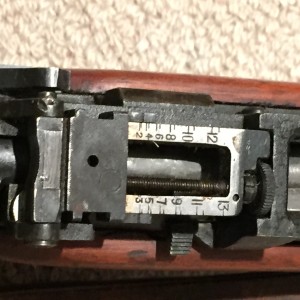
At a gun show on 2015-11-15, I spotted a back sight for a Lee-Enfield No. 4 rifle. The battle peep sight had been milled off. To most collectors or shooters this meant that “Bubba” had gotten at it so they did not want it. I recognized it as the sight modified officially for the Lee-Enfield sniper rifle. The peep sight was milled off to avoid it rubbing against the telescope. Best of all, the sight was for sale at less than 1/4 of the market price.
===================
THE LOST STEPS TO THE MID-1700s BLOCKHOUSE
In Dartmouth, Nova Scotia, which was founded in 1750, is on Halifax Harbour and is therefore strategically located. A blockhouse was built for defence. While working at the Dartmouth Heritage Museum in the late 1960s as a teen-aged volunteer, I came across a booklet in the City Library upstairs. Inside was a mention that the British soldiers had carved steps in the rock to aid their climbing up to the blockhouse’s position. We knew where the blockhouse was in general and the residents of the house on the property had found some cannonballs in the ground there. I went looking and actually found some of the steps. The city had built the City’s Works Yard below the blockhouse site and had blasted away part of the solid rock (slate?) hillside. Above this cutaway area I found about 8 to 10 steps carved into the rock, leading uphill leading to the site of the blockhouse. The steps were shallow, perhaps 4 inches deep and about a foot wide as I recall, and something of a semi-circular shape when viewed from above. When I revisited the site about 2010, I could not find the steps due to the vegetation that had grown up. I am sure that they are still there. close to the road that goes up the hill to the house where the blockhouse once stood. Sadly, their existence has again been forgotten by modern generations.
===================
PIG HOLDER
I often found while working in museums that I would glance through an old catalogue one day, pause and look at an unusual item and then the next day, someone would bring that exact item to me! They would say “Do you know what this is?” and I would answer “Yes I do” and tell them! I must have sounded like the Pawnbroker on Pawn Stars who knows all about everything … or at least appears to do so on TV.
One example that I remember is a Pig Holder. It is the size of an ice scraper for a car, is made of steel and has an opening like a closed-end wrench at each end. The pig farmer would put a pig’s foot through the hole at one end and then he could control the pig, just like a policeman in the old days using what they called a “Come-along”.
===================
ESSEX & KENT SCOTTISH REGIMENT BADGE AS A SCARF BROOCH
While Jeanette and I were dating, before we got married, she put a brooch on her scarf. When I saw it I told her to take it off and she thought I was crazy. I examined it and told her that it was made from a cap badge of one of the regiments that my father had served in during 1943-1944. It was from the Essex and Kent Scottish Regiment and my father had served in the Essex Scottish Regiment which was before two units were amalgamated. The regiment’s headquarters is thousands of miles away from where we live and is located in Windsor, Ontario. She had bought it simply as a nice looking brooch, little realizing that she would date and later marry the son of a man who had served in THAT regiment!
===================
THE VIKING SHIP BROOCH
My wife’s sister Anita gave her a Viking Ship brooch many years ago as a gift in recognition of their father’s Norwegian ancestry. One day it disappeared and could not be found. Many years ater I came into her life, When I moved in and was unpacking, a brooch fell out from a pile of my clothing. I had never seen it before, but Jeanette recognized it as her long-missing Viking Ship brooch! How it got in among my things remains a mystery as we did not know each other when it went missing. Our best explanation so far is that a friendly poltergeist placed it there so that we would find it.
===================
THE BUNAD
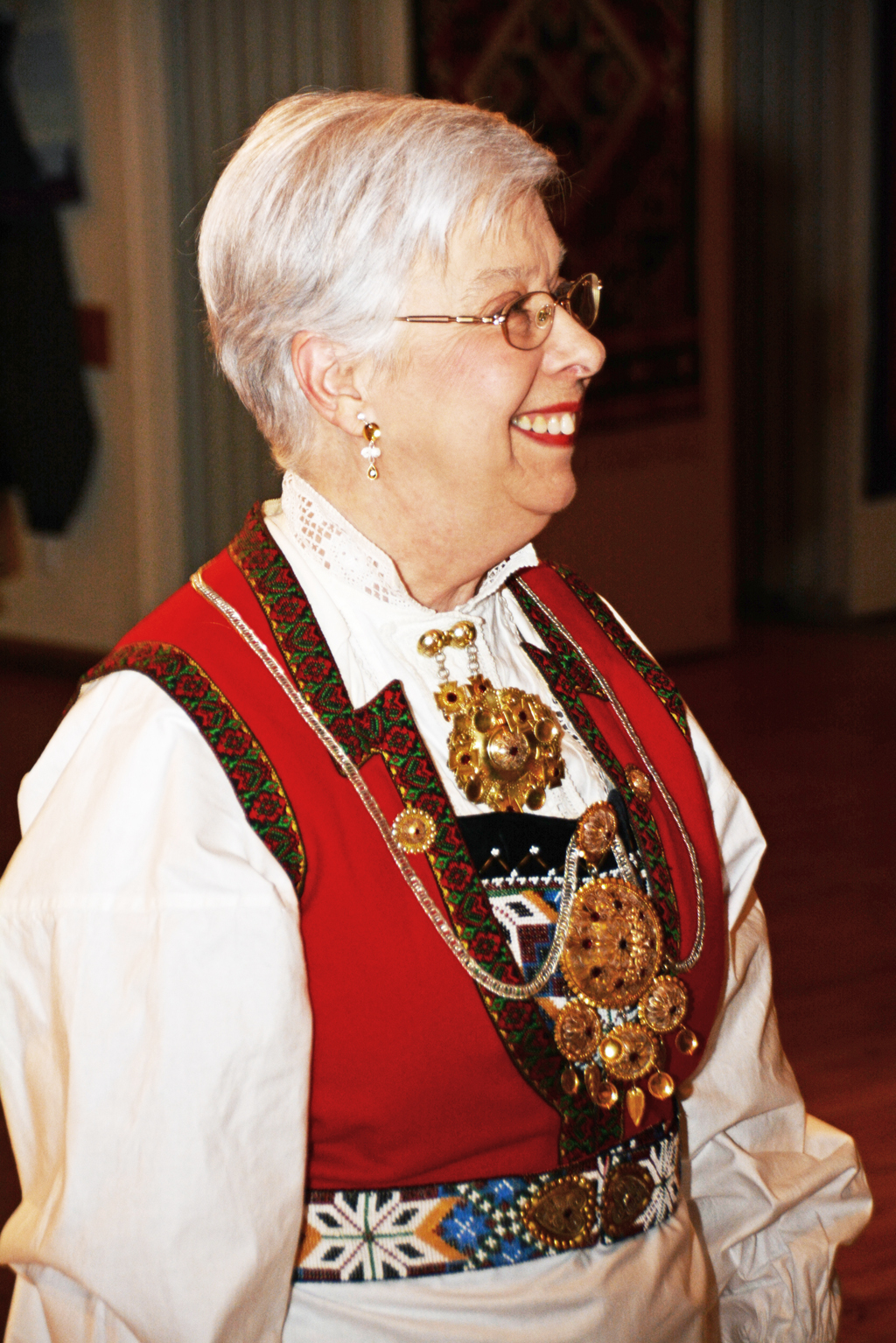
My wife Jeanette’s paternal Grandfather emigrated from the Hardanger Fjord area of Western Norway, near Bergen. The traditional clothing in Norway is called the “Bunad” and Jeanette always wanted a bunad from the Hardanger area. Unfortunately bunads are very expensive and elaborate ethnic costumes and Jeanette never felt that she could justify spending the money on one. To complicate matters there are perhaps as many as 200 bunad designs for the many areas of Norway.
On about October 4th, 2015, Jeanette was watching her husband’s tables at a gun show in Chilliwack. British Columbia. A lady visitor saw Jeanette’s neck lanyard which has NORWAY printed on it in a repeating pattern. They started chatting and became friends.
At the next month’s gun show, on November 15 2015, the lady brought in two Bunads that she and her mother had bought in Norway and had worn here, and gave them to Jeanette. Her mother had passed away, the bunads no longer fit her and there was no-one interested in the Norwegian culture in the family. The following month’s show, December 12th, the lady brought in a complete set of the “solje”, the Norwegian jewellry for the bunad.
- The bunads were a gift.
- The bunads fit with minor hemming!
- The bunads are for the Hardanger District and thus of over 200 patterns, was the correct pattern for Jeanette!
===================
SIX DEGREES OF SEPARATION
FORT BATTLEFORD, SASKATCHEWAN
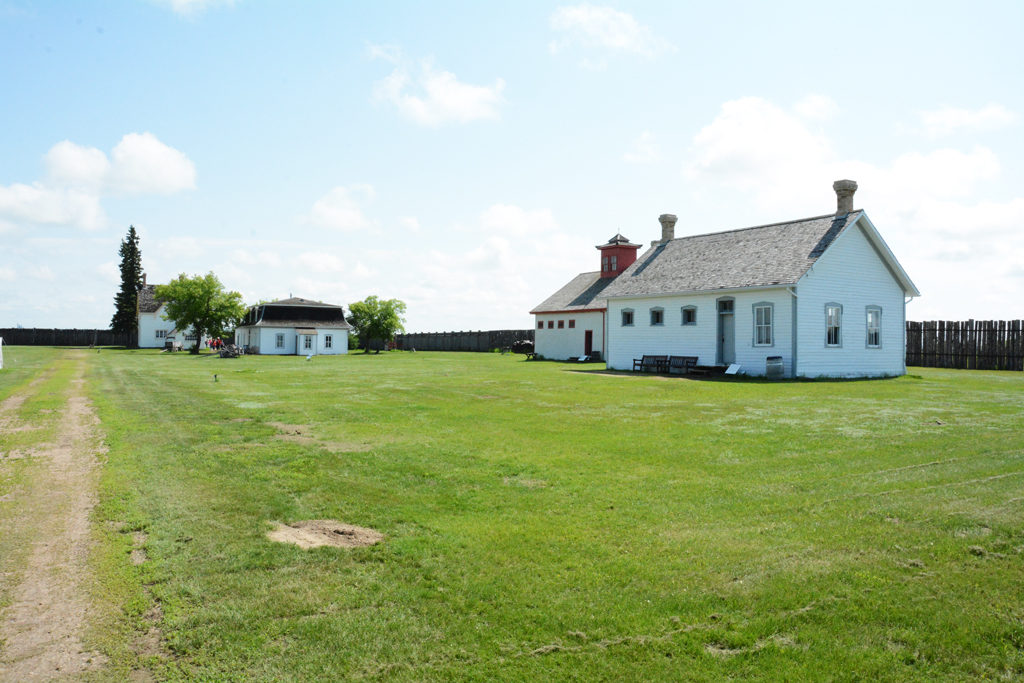
It has been said that if you talk long enough with a stranger. that you will eventually find some connection with them and that there will be no more that six links in that connection.
Today, February 21, 2018, I want for an appointment. There was a delay and an older couple was preparing to leave that office. Within five minutes we had a connection. Snowing > Sakatchewan > both the wife and I had lived in North Battleford > Fort Battleford where I worked as the Interpretive Officer (2nd in Command at the Fort) > her mother had also worked there > what was her name? > Julie Stroo. The connection was very direct as Julie Stroo worked for me as my senior Interpreter (tour guide) at Fort Battleford circa 1978-1982. I had stored an old jeep in her barn when I moved back to B.C.
=============
FAMILY MEDALS
In the summer of 2023, my wife and I attended a military collectors’ show in Edmonton. I do not collect medals so I did not pay attention to any of them My wife however is curious. She called me over to look at some medals. “Isn’t that your Mother’s maiden name?” she asked? Sure enough, I recognized the name. Samuel Rigby Heakes. Futher research showed I had ordered his World War I army record from Library and Archives Canada 20-years ago. He was my half-first cousin, twice removed.
Lieutenant-Colonel Samuel Rigby Heakes. MBE (Military). Wounded twice. Mentioned in Despatches (MID). In addition to his medal group there were his cap badge, collar badges, identity bracelet, and his wife’s WWI medals. The grouping was expensive but I felt that I wanted to bring it back into the family.
